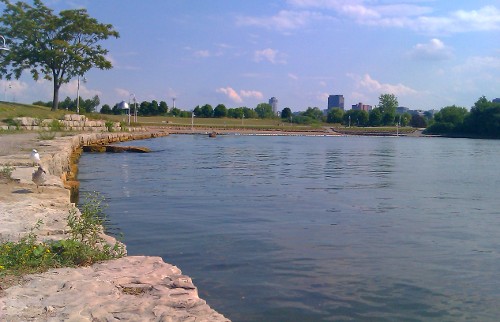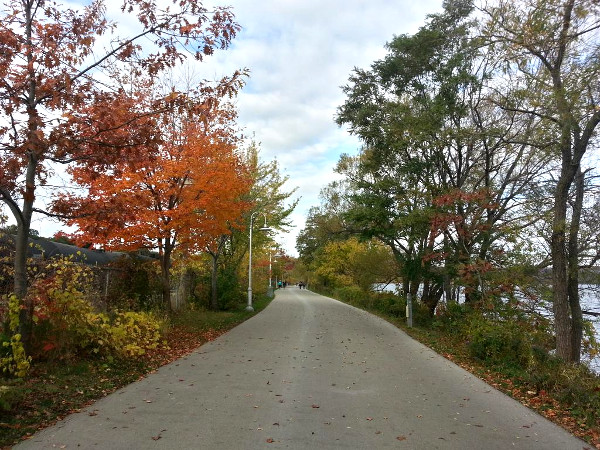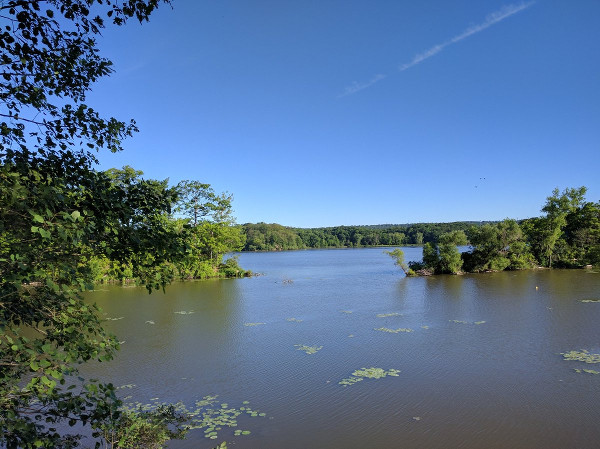The city's reanimated shoreline has become one of the key attractions of the new Hamilton. But the process is not over and there are vexing questions about what the future will bring.
By Stephen Dale
Published April 26, 2017
Outsiders might assume that miraculous restorations of Hamilton, Ontario's Bayfront Park and neighbouring Cootes Paradise are products of the city's current post-industrial makeover. The revitalization actually began decades ago, spurred by a powerful wave of citizen activism.
This podcast documentary, produced for Green Planet Monitor, explores that remarkable history and considers what comes next.
Hulking brick warehouses and manufacturing plants, often resting on prized real estate overlooking an impressive body of water, are gutted and remade as luxury condominium complexes. Modest diners and cut-rate retailers on nearby commercial streets are squeezed out as real estate prices rise and a new kind of clientele make their preferences known.
The fifty cent cup of java is replaced by the artisanal vanilla soy latte. You can't get a grilled cheese that isn't made with sourdough bread and embellished with organic beetroot chutney.
Versions of this story have played out in a multitude of one-time manufacturing powerhouses across North America: Pittsburgh, Baltimore and Buffalo, to name a few. The phenomenon has been driven mostly by a massive economic shift, where the fabrication of durable goods moved to lower-wage jurisdictions in the south, while northern economies have been reoriented around more nebulous things like financial services and high-tech.
You can see these forces at work in my old hometown-Hamilton, Ontario-until recently regarded as the manufacturing capital of Canada. For decades, Hamilton's downtown had been sliding deeper into decline, first as a result of industrial workers decamping for the roomier, cleaner suburbs, and later as the disappearance of blue collar jobs eroded the city's tax base.
An ill-advised program of urban renewal, based on the construction of downtown shopping malls and the demolition of old buildings to make parking lots, had only made things worse.
But now, a new chapter has begun. Hamilton's down-in-the-mouth urban core has been colonized by artists and several other sub-species of Hipster. They form the advanced guard of a flood of real estate refugees fleeing nearby Toronto's overheated property market.
This "gentrification" - a loaded term - has had both positive effects and worrisome ones. Streets that were once dangerous to walk at night now attract crowds of people out for an evening of drinking, gourmandizing or gallery-going. Events like Art Crawl, now emblematic of the city, have brought a sense of life to downtown Hamilton that hasn't been there in years.
Meanwhile, all this activity - and the Bohemian sheen it imparts - has caused a precipitous spike in real estate prices and attracted land speculators. The risk here (which has provoked much agitated debate locally) is that this community will ultimately become just like Toronto, an hour down the road, in the sense that people of modest means will get priced out of decent housing, making downtown Hamilton just another playground for the well-to-do.

Bayfront Park (RTH file photo)
The revitalization of Hamilton's waterfront could easily be seen as an adjunct of this larger process of gentrification. In other cities, redeveloping the waterfront has been part of a conscious, planned leap into a post-industrial age.
Yet as you can hear in this audio story, the rescue of major parts of Hamilton's Lake Ontario shoreline began at a time when industry still defined the city. It was propelled, initially at least, by a citizen advocacy movement fueled by a sizable quotient of working-class feistiness and a broadly defined sense of the public good.
Today, the city's reanimated shoreline - once coveted by industry and kept inaccessible to the public - has become one of the key attractions of the new Hamilton. But the process is not over and there are vexing questions about what the future will bring.

Waterfront Trail in autumn (RTH file photo)
Since the re-emergence of the lakeshore coincides with Hamilton's ongoing gentrification (and the associated jumps in real estate values) will this restored paradise - brought back to life through significant public investment and citizen involvement - now be seen as simply a financial resource to be exploited? A large chunk of recently de-industrialized land is soon to be sold off for residential redevelopment.
Will that land wind up being used solely for luxury housing like the multi-million dollar condos that now define the Toronto lakefront?
In more general terms, will the lakefront area remain a place people of modest means can afford to go to, and a place where they feel welcome?

Cootes Paradise (RTH file photo)
Werner Plessl, director of the Hamilton Waterfront Trust, says the accessibility of this area to people of all incomes is one of its most appealing features. "During the summer the city has a free bus shuttle to bring people here," he says.
"I know people on a fixed income who call a park bench the 'cottage' that they can't afford in Muskoka. I think it's important to keep this place open to everyone."
If Hamilton were to lose that, if its egalitarian ethic were eroded by marketplace temptations... well, it just wouldn't be Hamilton anymore.
This podcast and article was first published by Green Planet Monitor and is reproduced here with permission.
You must be logged in to comment.
There are no upcoming events right now.
Why not post one?